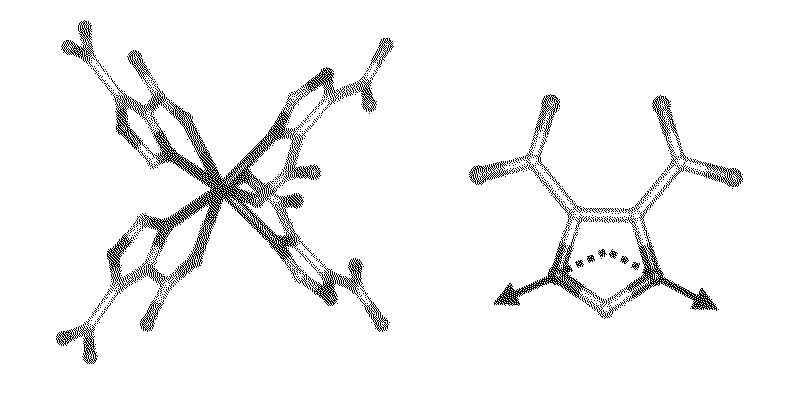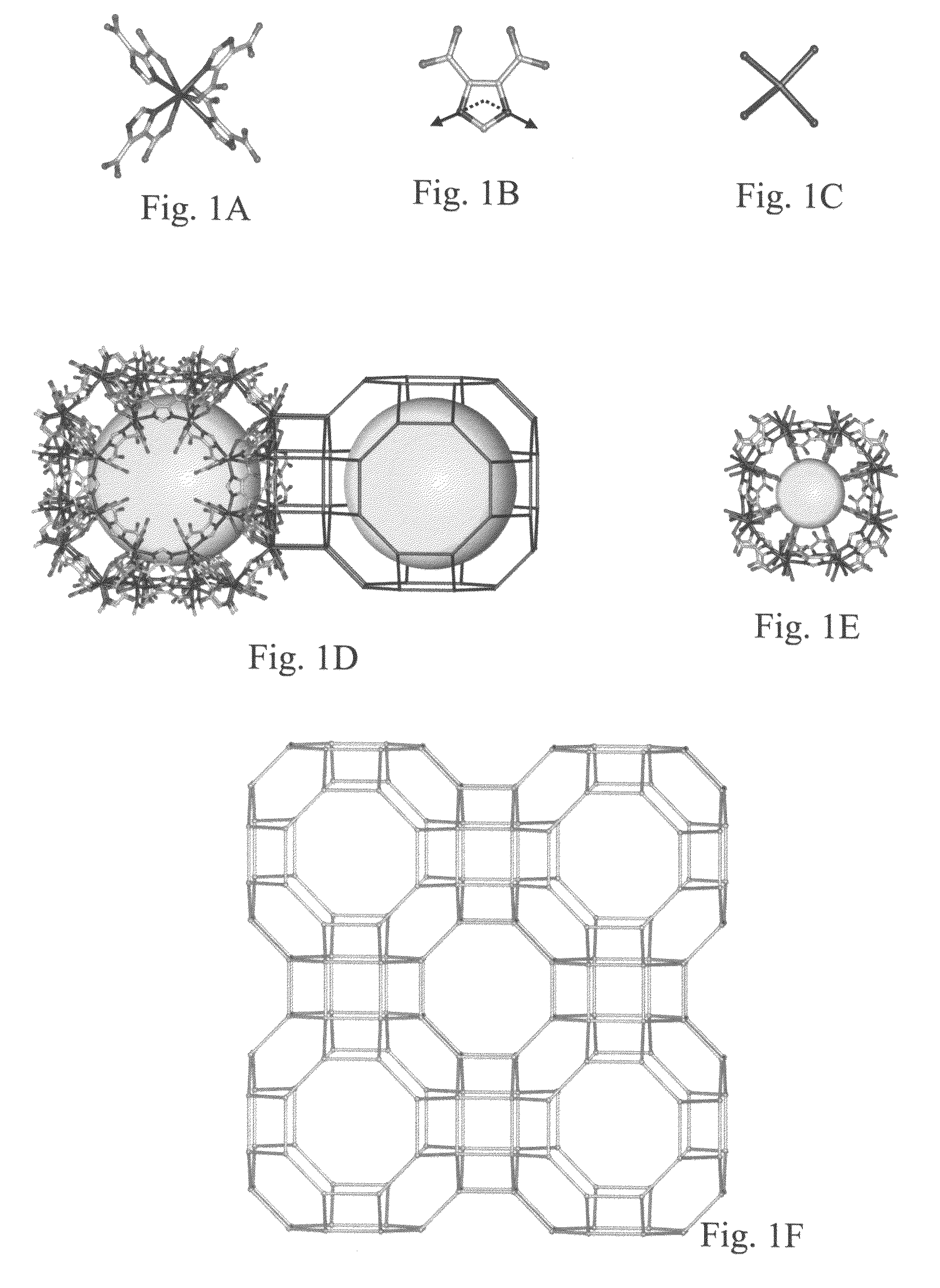Zeolite-like metal organic frameworks (ZMOFS): modular approach to the synthesis of organic-inorganic hybrid porous materials having a zeolite like topology
a metal organic framework and zeolite-net-like topology technology, applied in the direction of organic-compound/hydride/coordination complex catalysts, physical/chemical process catalysts, other chemical processes, etc., can solve the problems of limited application of metal organic frameworks with zeolite-net-like topologies, limited application of small molecules, and limited application of metal organic frameworks constructed from tetrahedral building units
- Summary
- Abstract
- Description
- Claims
- Application Information
AI Technical Summary
Benefits of technology
Problems solved by technology
Method used
Image
Examples
example 1
N2 Sorption on rho-ZMOF-1 @78 K (FIG. 14)
[0080]Increments of nitrogen gas were introduced into a chamber containing the framework of rho-MOZ-1 of the subject invention. The temperature was held constant at 78 K. The resulting weight changes were recorded and plotted. The plateau was reached relatively quickly.
By applying the Langmuir and DR equations, the Langmuir surface area and pore volume, respectively, were estimated to be SL=843 m2 / g and Vp=0.32 cm3 / g.
example 2
Zeolite Metal-Organic Framework (rho-ZMOF) Containing Acridine Orange
[0081]Acridine orange (AO) was encapsulated within a rho-ZMOF of the subject invention (FIG. 14A). Analysis of the UV-visible spectra of acridine orange encapsulated metal organic framework zeolites shows that the AO is encapsulated in the cavities of ZMOF two components with lifetimes ˜2 ns and ˜11 ns (FIG. 14B). Analysis of the fluorescence lifetimes of metal organic zeolites containing acridine orange incubated with methyl xanthines or DNA nucleosides bases show an increase in amplitude of the fast component but no effect on the long lifetime component (FIG. 15).
example 3
Preparation of Indium MBB
[0082]Reaction between 2,5-H2PDC and In(NO3)3.2H2O in an EtOH / H2O solution in the presence of 4,4′-trimethylenedipiperidine (TMDP) yields a homogeneous microcrystalline material. The as synthesized compound was characterized and formulated by elemental microanalysis and single-crystal X-ray diffraction studies as In(2,5-PDC)2(HTMDP)(EtOH) (H2O)2 (1). The purity of 1 was confirmed by similarities between simulated and experimental X-ray powder diffraction (XRPD). In the crystal structure of 1 (FIG. 6A-6D), each indium metal ion is coordinated to two nitrogen atoms and four oxygen atoms of four independent 2,5-PDC ligands, respectively, to form an octahedral surrounding In(III) in the MBB, InN2(CO2)4. Each independent 2,5-PDC is coordinated to two In(III) metals by forming a five-membered ring via N— and O— heterochelation, and in a monodentate fashion through the carboxylate in the 5-position. InN2(CO2)4 where the In—N bonds and In-(5-carboxylate) bonds direc...
PUM
| Property | Measurement | Unit |
|---|---|---|
| temperature | aaaaa | aaaaa |
| bond angles | aaaaa | aaaaa |
| diameter | aaaaa | aaaaa |
Abstract
Description
Claims
Application Information
 Login to View More
Login to View More - R&D
- Intellectual Property
- Life Sciences
- Materials
- Tech Scout
- Unparalleled Data Quality
- Higher Quality Content
- 60% Fewer Hallucinations
Browse by: Latest US Patents, China's latest patents, Technical Efficacy Thesaurus, Application Domain, Technology Topic, Popular Technical Reports.
© 2025 PatSnap. All rights reserved.Legal|Privacy policy|Modern Slavery Act Transparency Statement|Sitemap|About US| Contact US: help@patsnap.com



